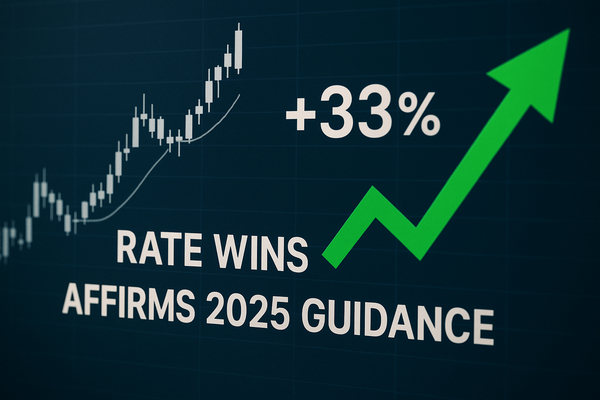
Avista reported a sharp Q3 beat on Nov. 5, 2025. EPS surprised by +33.33% while revenue missed by 0.49%. The company posted net income of $29 million for the quarter and confirmed 2025 guidance, with Avista Utilities expected at the upper end of its range and consolidated results near the lower end. Short term, the beat lifts confidence in rate-case execution and cost control. Long term, steady regulated cash flow supports valuation gaps across regional names. The print matters now because more than a dozen peers released results or analyst notes the same day, increasing cross-stock volatility in U.S., Canadian and emerging-market portfolios.
Avista’s Q3 outperformance and guidance detail
Avista (NYSE:AVA) led the group on Nov. 5 with a clear earnings surprise. GAAP net income for Q3 2025 was $29.0 million. EPS beat consensus by +33.33% while revenues missed by 0.49% for the quarter ended September. Management reiterated its full-year guidance and said Avista Utilities should deliver earnings at the upper end of the utility unit’s range, while consolidated results are expected near the lower end.
Avista published both a slide deck and an earnings call transcript on Nov. 5. The company also noted it was shortlisted in a 2025 RFP process where ownership options remain under consideration. Those items signal near-term capital allocation choices that can affect earnings per share and rate-base growth over the next 12–24 months.
AES and peer reporting cadence: volume of disclosures and what they show
The AES Corporation (NYSE:AES) posted two investor documents on Nov. 5: a Q3 2025 slide deck and an earnings call transcript. AES’s release added to a crowded docket that day: at least 18 named tickers in the set issued news or analyst notes. Eversource (NASDAQ:ES) and PPL (NYSE:PPL) each published Q3 slide decks plus transcripts, and Sempra (NYSE:SRE) followed suit with its call materials. Brookfield Renewable (BEP.UN:CA) filed a Q3 transcript as well.
That concentration of disclosures raises near-term liquidity and information-flow effects. With multiple names updating investors on the same day, trading volumes often increase and short-term beta can rise for smaller-cap names. For example, Avista’s beat stood out quantitatively against Centuri’s (NASDAQ:CTRI) results the same day, where CTRI reported an EPS surprise of −40.63% and a revenue surprise of +10.54% for Q3 — opposite directional signals that can widen relative-performance spreads within investor portfolios.
Analyst activity: upgrades, reiterations and rating dispersion
Analysts were active on Nov. 5. Jefferies upgraded American Water Works (NYSE:AWK) in a single note. Roth Capital reiterated Buy ratings on Clearway Energy (NASDAQ:CWEN) and on an A-share variant (NASDAQ:CWEN.A). BofA Securities maintained Buy on DTE Energy (NYSE:DTE) and also kept a Buy on a corporate bond issue (DTW) tied to DTE.
Ormat Technologies (NYSE:ORA) attracted mixed views: JP Morgan left a Neutral, TD Cowen kept a Hold and Roth Capital reiterated a Buy — three published stances in the dataset. That distribution (1 Neutral, 1 Hold, 1 Buy) highlights how analysts weight growth and yield factors differently across similar underlying assets. Jefferies downgraded Southern Company (NYSE:SO) in a single note, showing that even large caps drew differentiated attention from the sell side.
Other company snapshots with quantifiable cues
Several other issuers filed Q3 materials or saw analyst notes. PPL (NYSE:PPL) released a slide deck and transcript on Nov. 5. Southwest Gas Holdings (NYSE:SWX) published a slide deck plus a call transcript. Talen Energy (NYSE:TLN) posted a Q3 earnings call transcript at 4:15 PM EST. Brookfield Renewable’s BEP.UN:CA posted a transcript from its 9:00 AM call.
These filings provide numeric anchors investors can use to re-run peer multiples. For example, Avista’s EPS surprise of +33.33% versus Centuri’s −40.63% creates a quantifiable wedge in trailing earnings. When combined with the number of analyst notes that day — at least a dozen upgrades or reiterations across the list — the data set supports active reweighting decisions based on relative earnings momentum and regulatory progress.
Implications: short-term price action and longer-term positioning
Short term, the stream of Q3 disclosures and analyst notes increases headline risk. On Nov. 5, at least 18 tickers produced material items, so trading desks should expect higher intraday newsflow and occasional spikes in volume. Avista’s $29 million net income print and +33.33% EPS surprise provide explicit catalysts for re-rating at the company level.
Long term, the market will track whether rate cases and disciplined cost management translate into better-than-expected regulated returns across the group. Avista’s signal — Utilities expected to hit the upper end of their range while consolidated results may lag — is a pattern investors can quantify by comparing allowed ROEs, rate-base growth forecasts and multi-year capex plans disclosed in the filings that day.
Collectively, the Nov. 5 releases create a data-rich moment. Avista’s outperformance and guidance affirmation are the clearest numeric highlights. AES, Eversource (NASDAQ:ES), PPL (NYSE:PPL), Sempra (NYSE:SRE) and others added detail through slide decks and call transcripts. Analyst notes from Jefferies, Roth and BofA provided additional numeric anchors. For market participants, the next steps are mechanistic: review each transcript’s cost, capex and regulatory metrics; recalibrate peer multiples; and use the published earnings surprises and net-income figures as inputs to relative-value frameworks.












